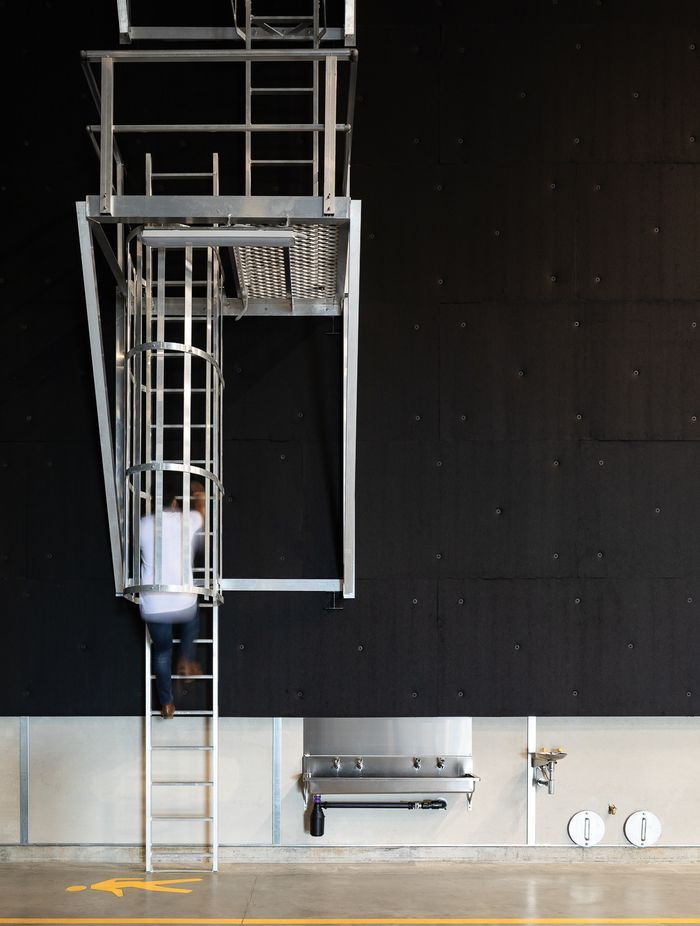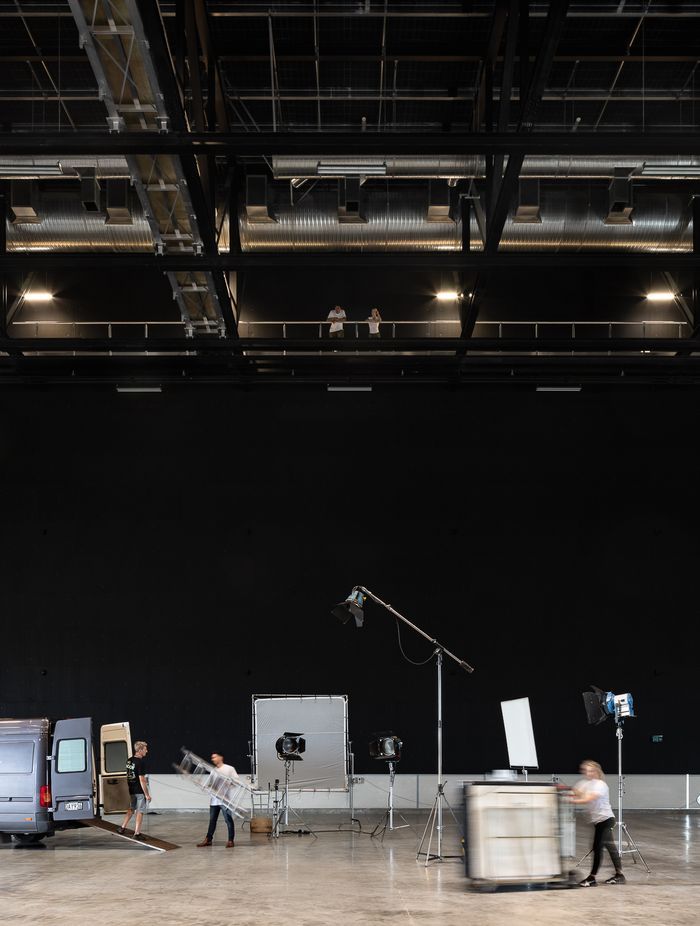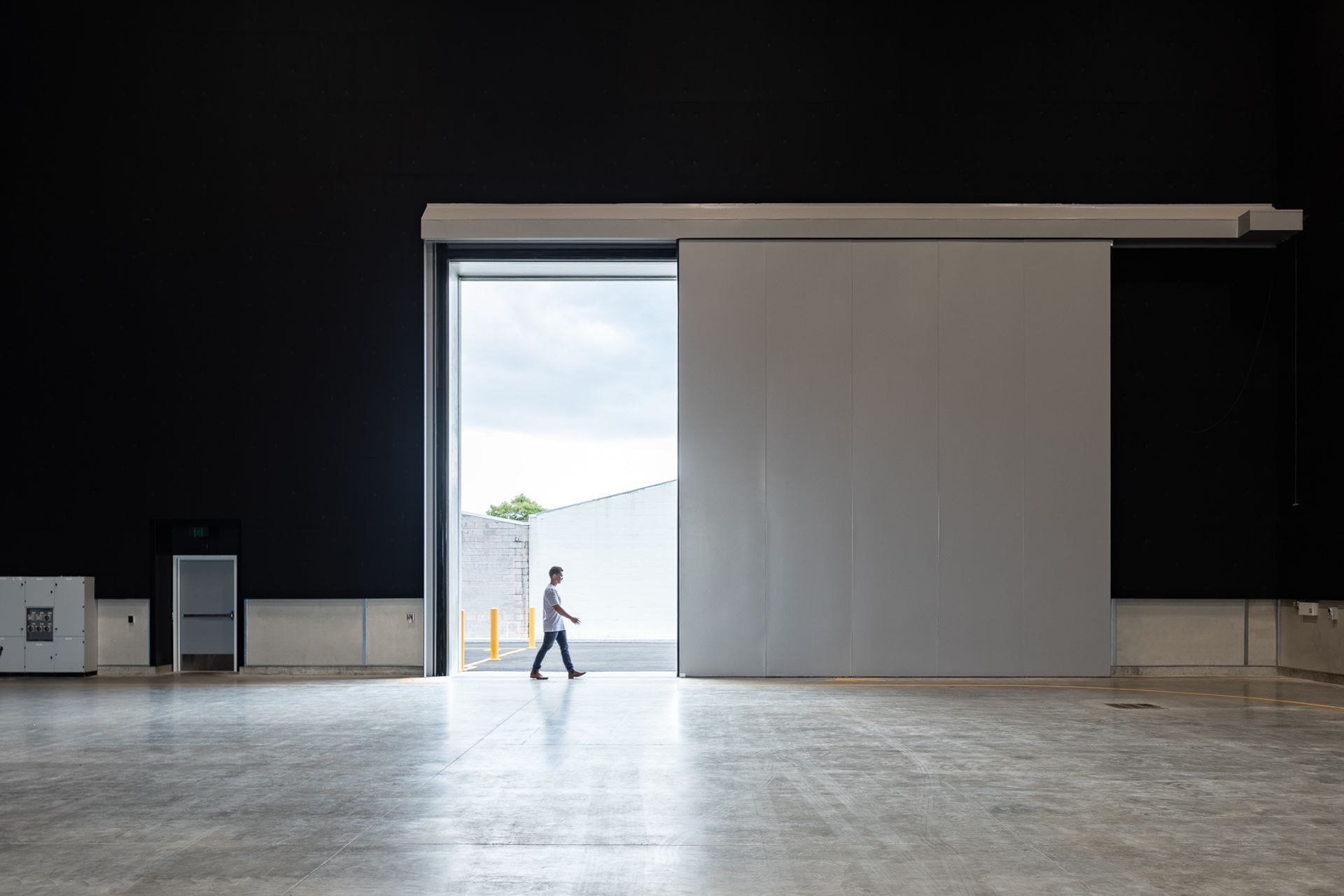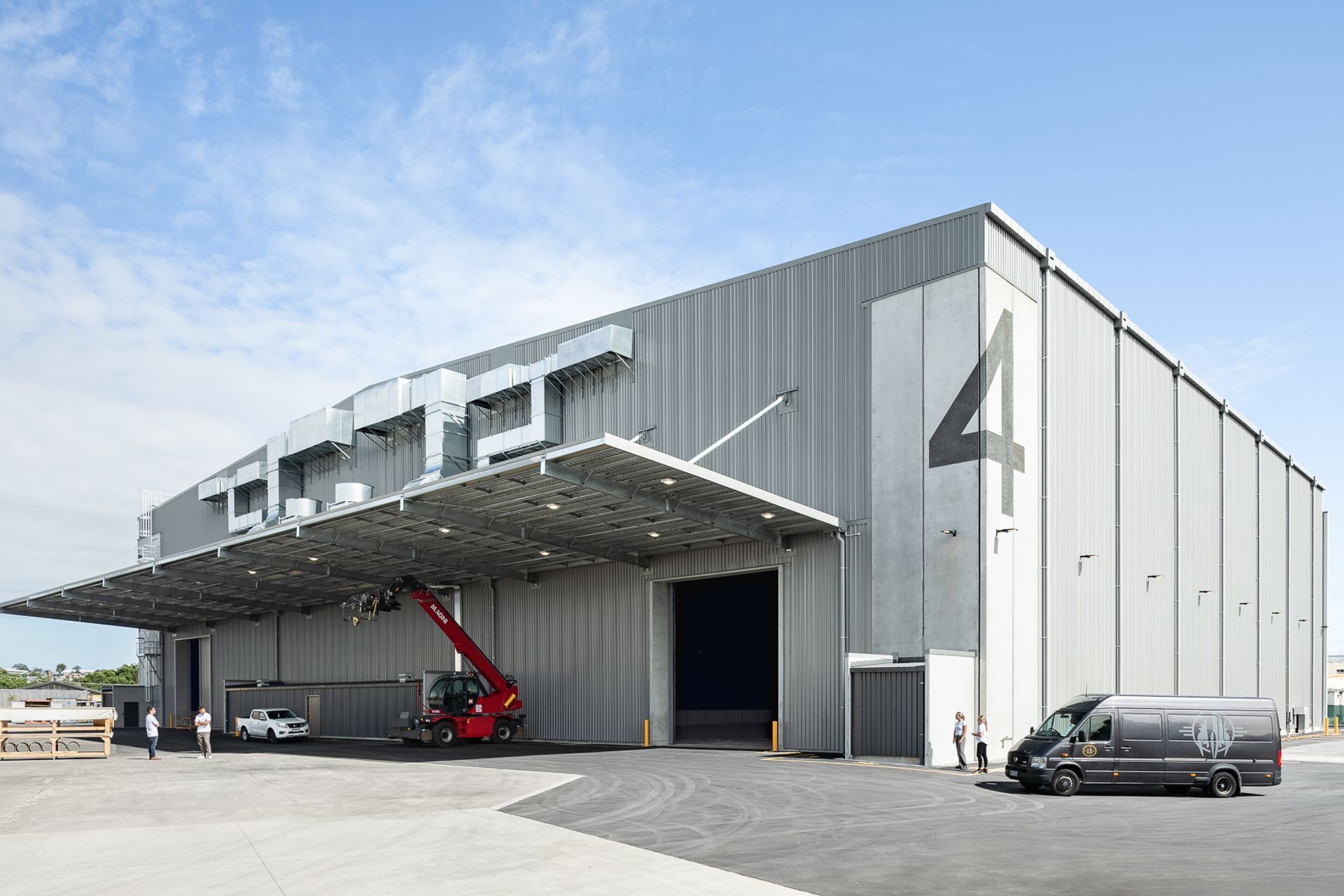Te Pūtahi - Auckland Film Studios set a new benchmark for the New Zealand film industry with first Green Star rated sound stages
Written by
07 September 2023
•
5 min read

Spanning over 11 acres in Henderson, Auckland Film Studios has a global reputation as Auckland’s premier filming facility, with credits in productions including Avatar Way of Water, The Lord of the Rings: The Rings of Power, and The Chronicles of Narnia. In December of 2022, Tātaki Auckland Unlimited officially opened stages three and four — gifted with the name ‘Te Pūtahi’ by iwi Te-Kawerau-a-Maki. The project was designed and delivered by a collaborative team: Ignite Architects, Precon, Haydn and Rollett, Marshall Day Acoustics, BGT, Crossfire, eCubed, and Maven, with input from film production experts.
With three key drivers for design — flexibility of use, acoustic performance, and vibration isolation — the team set out to create two studios that could deliver on the Tātaki Auckland Unlimited’s vision to offer global production teams a world-class filming experience in Tāmaki Makaurau.
“Flexibility was of the utmost importance,” says Isaac Kawiti, Associate at Ignite Architects. “The building needed to be adaptable for a broad range of productions, sets, and teams. We incorporated a number of purpose-designed features to enable this, including roof trusses capable of supporting a 20,000kg load, mechanical systems for theatrical smoke removal and fire safety, and significant electrical capacity. This adaptability is what makes the sound stages so appealing to global production teams.”



To accommodate scenes with fire and smoke, while avoiding the damage associated with non-isolated/disarmed fire sprinklers, the studios have been equipped with a 90m3/s smoke extraction system coupled with smoke and heat detection devices that can be isolated during takes. “The system also quickly removes theatrical smoke, speeding up time between takes, and acting as a return air function for heating and cooling, supporting efficiency,” says Issac.
Crucial to the studio’s function is acoustic performance, achieved by creating ‘a box inside a box’. While it appears as one solid wall, the building’s external layers are actually completely isolated from the internal layers and structure by rubber pads and flexible sealant. The total wall buildup is 1.2m thick, and the roof buildup is 0.8m thick, fitted with five layers of acoustic material to guarantee exceptional acoustics. The studios also have high-performance acoustic doors.
Located near Auckland’s western train line, vibration from passing trains was a key design challenge, with potential to impact camera stability. Issac explains, “By intertwining acoustic and geotechnical engineering, the idea was conceived to isolate Studio 4’s floor slab from the ground, using 2000m2 of Sylomer (foam) mat. Subsequent testing has recorded no detectable vibration or noise from passenger trains.”

Te Pūtahi holds the unique position of being the only Green Star rated film studios in New Zealand, achieving the 4 Green Star As-Built NZ v1.0 certification. To meet the criteria, embodied carbon generated during the build phase was reduced with 100% of demolished concrete crushed and reused on site. The studio walls were lined with a reclaimed wheat straw, all concrete contains a minimum 15% replacement of portland cement with fly ash, and 95% of the timber was either reused or sourced from a sustainably certified forest. “Ultimately, over 70% of construction and demolition waste was diverted from landfill,” says Issac.
Other Green Star initiatives include a 30,000L rainwater storage tank installed to service the building’s amenities. “Energy and water usage is measured at a total of 49 metres throughout, and can be monitored remotely by production teams and facilities managers, allowing split energy and water bills — should the sound stages be tenanted individually.
“The BMS system can be managed remotely for occupant comfort and safety, reducing energy use and costs for tenants. There is provision for solar panels to be connected to the main switchboard and controls system, and bathroom lighting and ventilation operate on PIR sensors, again maximising efficiency.”


This was a significant project for Ignite, though challenging for the project team due to site constraints, a tight schedule between filming seasons, and the complexities of sourcing specialist materials from overseas during the pandemic. The outcome, however, has been highly rewarding, with the project team recently recognised at the New Zealand Building People Awards in the collaboration category.
Ignite Principal Grant Armstrong says,“The sound stages’ positive reception aligns with the timely delivery, world-class features and considerable impact on Auckland’s film production industry. We expect its commercial success to endure, and its Green Star rating to set a precedent for similar developments in the future.”
“This building has set a new benchmark in the New Zealand film industry. Large productions initiate significant spending in New Zealand’s economy, and encourage prosperity in the local community, too.”
Te Kawerau-a-Maki call Henderson ‘Te Kōpua’ or ‘deep pool’, which references the connection of Te Wai O Panuku (Panuku stream) and Wai Horotiu (Oratia stream). Te Pūtahi means ‘to join, meet, and intersect’ — an appropriate name for the stages, not only due to their location but their unique position to connect the local community with a global one.
Learn more about Ignite Architects and Te Pūtahi at Auckland Film Studios.